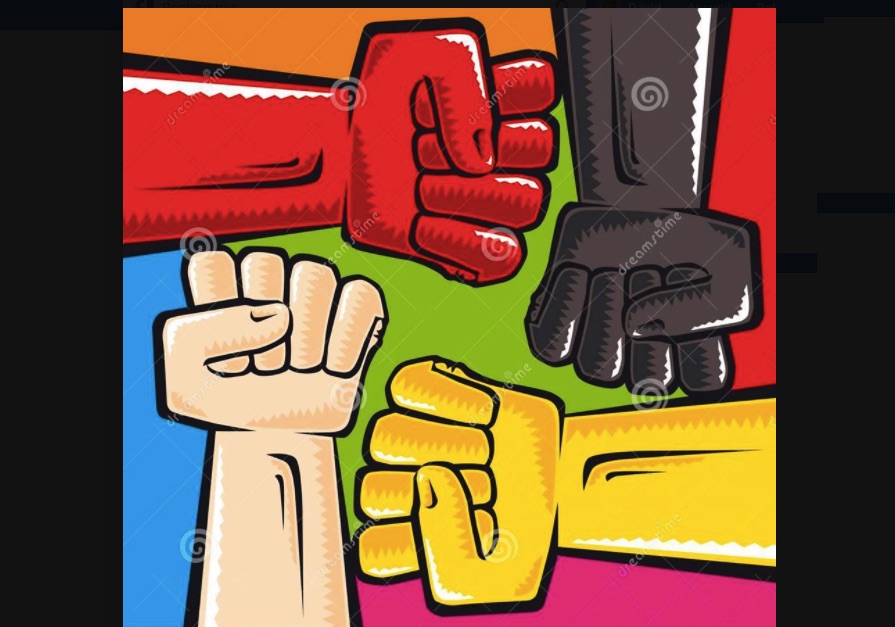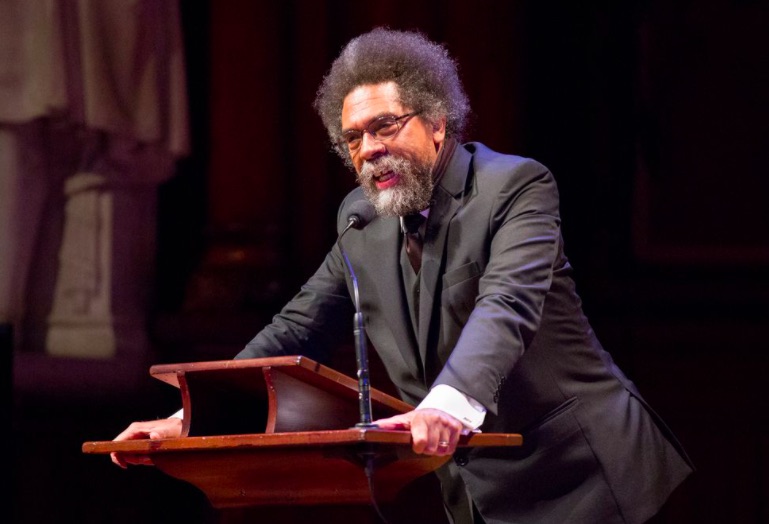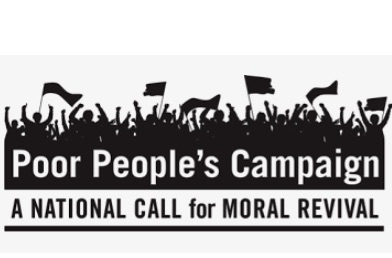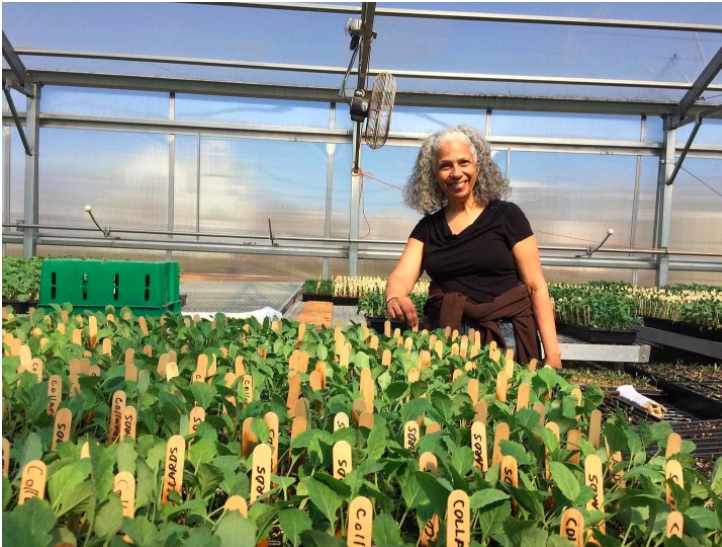. . SUSTAINABLE DEVELOPMENT . .
An article by Jason Mark reproduced from a Sierra Club website with permission of the Sierra Club (©2020 Sierra Club. All Rights Reserved)
As a veteran urban farmer, I often get questions from friends and family about best practices for backyard gardening. It wasn’t a surprise when my buddy Martin texted some questions for how to get a vegetable scene started. “Is it OK to start tomatoes outside now? Or better to start indoors?” (Indoors, I told him, if you have seeds, and outside as long as you have well-developed plants for transplanting.) Martin is a chef and a longtime fixture of the Bay Area’s farm-to-table scene. With his restaurant closed, he’s got time on his hands, some of which he’s using to make sure his family stays well fed. He has 10 pounds of rice and 15 pounds of split red lentils socked away (just in case) and thought he should also begin a little home-scale food production. Nothing unusual, he said—just tomatoes and squash, beans along with some herbs. “I’m trying to ride the line between being prepared and being a prepper,” he told me.

Photo by Lori Eanes
Gardening seems to be having a moment as the crisis pushes people to find constructive ways to use their time, reduce trips to the grocery stores, and benefit from its therapeutic aspects.
Martin isn’t alone in his sudden enthusiasm for backyard food production. As the pandemic settles into a new normal, many people have pivoted from panic buying to “panic planting.” Seed companies are reporting an unprecedented surge in demand from home gardeners. Johnny’s Selected Seeds, an employee-owned company in Maine that is a favorite of organic growers, reported a 300 percent jump in orders since early March. Baker Creek Heirloom in Missouri had so many new orders that it had to shut down its website for three days to allow its staff to catch up. Some extension agencies—the land grand universities’ programs that provide research and educational support to farmers and hobbyist gardeners—are seeing a skyrocketing interest in gardening education programs. The new passion for home food production has even extended to livestock. Poultry-raising operations and feed stores are experiencing such a spike in interest for laying hens that they are nearly running out of young chicks. As Katie Brimm wrote recently for Civil Eats, “We may be on the verge of a resurgence of World War II–style Victory Gardens.”
Searching for a silver lining to a deadly pandemic is dangerous business. But there are still glimmers in the dark. The renewed interest in local food production represents one positive consequence of this waking nightmare, among the other encouraging signs—the countless examples of selfless service, generosity toward others, and mutual aid. The pandemic is forcing people to think hard—and to feel deeply—about their connection to food. There’s nothing like the sight of stripped grocery store shelves to focus people’s attention on where their food comes from.
This explosion of interest in food production can help create a new cultural landscape for long-term community and ecological resilience once the pandemic has passed. And the renewed passion for backyard agriculture couldn’t have come soon enough.
For the past 15 years, I’ve been both a chronicler of and a partisan for the sustainable food movement. As a journalist, I have written about food safety regulations, local food systems, and the benefits (and limitations) of organic certification. In 2005, I cofounded a nonprofit educational garden and orchard called Alemany Farm along with some guerilla gardeners, public housing residents, and community activists. Today, Alemany Farm is the largest urban farm in San Francisco—a 3.5-acre smidgen of soil tucked between eight lanes of Highway 280 and a public housing complex. Every year, we grow more than 25,000 pounds of organic fruits and vegetables, all of which we give away for free while at the same time educating thousands of people annually in the basics of regenerative agriculture.
My belief in the importance of urban agriculture as a social, cultural, and ecological good is as strong as it was when I first planted my spade at Alemany years ago. I’ll admit, though, that in the past couple of years I’ve begun to experience doubts about the long-term sustainability of the sustainable food movement. Organic and regenerative farmers are mostly focused on improving the ecological practices of our agriculture system; food justice activists focus on ensuring that everyone has basic access to healthy foods, while also putting a spotlight on the exploitative conditions faced by farmworkers and food service employees; some activists promote a broader goal of “food sovereignty”—the idea that everyone should have a measure of agency over what they eat. Call it what you will, the good food movement no longer has the cultural currency it enjoyed during the heady days of the mid-to-late-aughts.
Maybe you were there and remember what it was like. Michael Pollan’s food writing reigned atop the bestseller lists. New farmers’ markets were popping up across the country and farm-to-table was the hot new thing at restaurants. Urban communities—often led by people of color—were reclaiming asphalt and concrete to establish community gardens and neighborhood farms; in San Francisco, we planted a big and beautiful (if temporary) Victory Garden in front of city hall. Young people were fleeing office jobs and flocking to farms. Michelle Obama planted a vegetable patch at the White House.
(Article continued on right side of page)
What is the relation between movements for food sovereignty and the global movement for a culture of peace?
How can we work together to overcome this medical and economic crisis?
(article continued from left side of page)
At some point, though, the momentum stalled. Despite the best efforts of “ag-tivists,” it has proven impossible (so far, at least) to reform the perversities of a federal agricultural policy that sustains an unhealthful and even deadly American food system. Many beginning farmers found their dreams dashed on the hard realities of exorbitant land values and insultingly low prices for their product; there were whispers that we were approaching “a second farm crisis” like the one that wiped out many family farmers in the 1980s. A lack of critical infrastructure continued to bedevil the efforts to establish more regionalized food systems. Those of us in the nonprofit farm education sector saw philanthropies’ interests move to other issues. The movement suffered sustained small-arms fire from journalists and academics who argued that school gardens and urban farms were nothing more than a privileged affectation. And while it’s true that the sale of organic foods continues to skyrocket, the food sovereignty movement remains far from its goal of transforming chemically intensive agriculture and addressing the poverty that grips farm owner-operators as well as farm laborers. It has felt to me—along with some other farmers I know—like the bloom is very much off the rose.
Now, the world has been turned upside down, and the winter of doubt has turned into a spring of guarded hope among food sovereignty activists.
The pandemic has allowed people to see the world with fresh eyes. It’s as if the casing on the machinery of society has been opened up and, with a jolt, afforded us the opportunity to inspect the inner workings of things. Among other revelations, the pandemic has illustrated the fragility of our food system. The waves of panic buying and hoarding prove how totally dependent we are on global chains of production and distribution while also revealing a society-wide gut feeling that such a system might not be all that dependable: If people were confident there would be plenty of rice and pasta tomorrow, there wouldn’t be any need to squirrel away staples today.
No wonder people are finding a solace in reconnecting to their food via backyard planting. To feel grounded, folks are getting their hands in the dirt.
During the past week, I’ve been talking with other urban farmers and food sovereignty activists here in California. In conversation after conversation, I’ve heard many of the same things: a sense of gratification that mainstream society is finally heeding their calls for local and regional food systems, combined with a worry that, once the pandemic passes, people will abandon the newfound interest in where their food comes from.
“This is our 15th anniversary, and for 15 years we’ve been telling people, ‘In times of crisis, we need to grow our own food.’ Well, here we are,” Doria Robinson, the founder of Urban Tilth in the Bay Area industrial city of Richmond, told me. Urban Tilth operates a three-acre farm along with seven smaller community gardens and employs mostly local youths of color to grow and distribute the crops. Before the pandemic hit, the organization had about 50 members in its community supported agriculture (CSA) program, which provides households with a box of fruits and vegetables grown at the Richmond sites and supplemented with produce from farms on the edge of suburban Contra Costa County. In the past few weeks, the number of CSA members has more than tripled, to 170. “Having a local source of some portion of your food just seems like a no-brainer, as opposed to depending on really long supply lines and food coming from way, way, way away,” she said.
For Robinson, the pandemic’s effects on her staff have been just as profound as the effects on her customers. Urban Tilth’s youth workers, Robinson told me, are experiencing a newfound sense of pride and importance in their work; their efforts, city and county officials agree, are quite literally essential. “In this moment, they [Urban Tilth’s youth workers] are stepping up like no one else. They are getting food to families every week. And they are hearing that all the work they have been doing matters. They’re saying, ‘I’m going to be a farmer in the hood, and that matters, it really matters.’”
Ron Finley, the self-described “gangster gardener” of South Central Los Angeles, expressed sentiments similar to mine. Since his 2013 Ted Talk went viral, Finley has traveled the world like a sort of Paul Revere of the food sovereignty movement. He says this moment of crisis is finally bringing home the message he’s been spreading for years. “We are in this dire hoarding, oh-my-god, the-sky-is-falling, the-world-is-ending mode, when we really don’t have to be,” said Finley, who has been keeping himself busy tending his home garden and his public garden at the corner of Exposition and Chesapeake in L.A. since he started sheltering in place on March 11. “It’s like, are you listening now? Are any of you listening now? You can’t eat fucking diamonds. You can’t eat money. People have been valuing all of this dumb shit, and now they see how valuable food is. [The pandemic] has hit a values-system reset button.”
Debbie Harris, a longtime organic grower who is now the farm manager at Urban Adamah, a two-acre urban farm in Berkeley inspired by Jewish ideals of service, agreed. “More than anything, this [new interest in food and farming] isn’t intellectual; it’s about connection,” she told me. “That’s the basis of a transformed food system, transformed planet, transformed way of living. . . . People are catalyzed on an emotional and personal level. Right now, people are being forced to think about how their food is grown and who their neighbors are.”
But Harris also worries that this passion for locally grown foods might evaporate once life returns to the status quo. “I feel that once COVID is over, I fear people won’t have the same fire to get involved in their community farm or to reform our food systems. . . . Because we have so much amnesia as a culture, because of the privileges that late capitalism has afforded us.”
It’s a concern Finley and Robinson both share. “How long is it going to last, and how long until we go back to how it was, with kids killing other kids over tennis shoes?” Finley wondered. Robinson told me, “People have that amnesia and [some of them] will go back to In-N-Out Burger, or whatever. I’m not holding my breath for everyone starting a garden. Because it’s a lot of work.” Still, she maintains a measure of hope that some of this beneficial change might hold. “When people get introduced to [gardening], they start to crave it. So I actually feel like a lot of folks are being introduced to us right now, and they will stay planted on the ground. Not all of them, but some of them.”
Will the people now swooping up seeds, vegetable starts, and baby chicks eventually decide to stick with their newfound passion? Will an emergency-fueled reaction deepen into a lasting way of life, or will people cast aside their gardens as relics of the germ-times? Those are just a few of the questions society will face as we come out of this dangerous moment. As Arundhati Roy wrote in a recent commentary for the Financial Times, the pandemic “is a portal, a gateway between one world and the next. We can choose to walk through it, dragging the carcasses of our prejudice and hatred, our avarice, our data banks and dead ideas, our dead rivers and smoky skies behind us. Or we can walk through lightly, with little luggage, ready to imagine another world.”
I am cautiously optimistic that backyard food production may sink down roots in that other world. I’d like to imagine, as Robinson does, that once people get a taste of gardening and come to know their farmers, many of them won’t want to return to “normal.” Hopefully, people will keep their new gardens, not because backyard food production is an exercise in “living simply”—a home-scale back-to-the-land effort—but because it’s an example of living more resiliently. Home food production can teach habits of mind long after this crisis passes (as it will), when we find ourselves confronted by other crises like climate change (as we will).
For one thing, to be a home gardener creates a routine of attentiveness toward the natural world, if only because a gardener must become, by necessity, a meteorologist, hydrologist, soil scientist, and entomologist. This kind of attention to more-than-human nature is a necessity if we are to navigate this hot and crowded century with as few regrets as possible. Community gardening and backyard food cultivation also create bonds of neighborliness. At the very least, you need your friends and neighbors to eat all of those beans and summer squash you’re going to be growing; at the very best, you find yourself relying on your community to share seeds and starts, gardening dos and don’ts. Such bonds are what we need—and will continue to need—to get through tough times together.
Finally, the plain physicality of gardening might help rebalance our lives away from the virtual and toward the real. As Finley said, you can’t eat diamonds—and you can’t eat ones and zeroes either. When you wring your sustenance out of the soil, you can’t help but understand that all life on land, the entirety of human civilization, depends on nothing more than the thin epidermis of the earth.
In the past couple of weeks, I’ve seen some of this in action. My next-door neighbor, Josie, is normally a flower grower, but this spring she’s putting in a vast new vegetable garden. Our neighbor to the north, Brad, is doubling the size of his garden and building a hops trellis to fuel his home brewing hobby. They’ve been exchanging vegetable starts, and they decided to go in together on a bulk delivery of topsoil. The whole thing has the feel of an old-fashioned barn-raising—just with everybody dancing around each other at six feet apart. The scene of communal crop growing on my one little block gives me hope: A popular passion for food sovereignty might just be one unlooked-for harvest to come from this awful scourge.
 Reuters Video of Washington demonstations
Reuters Video of Washington demonstations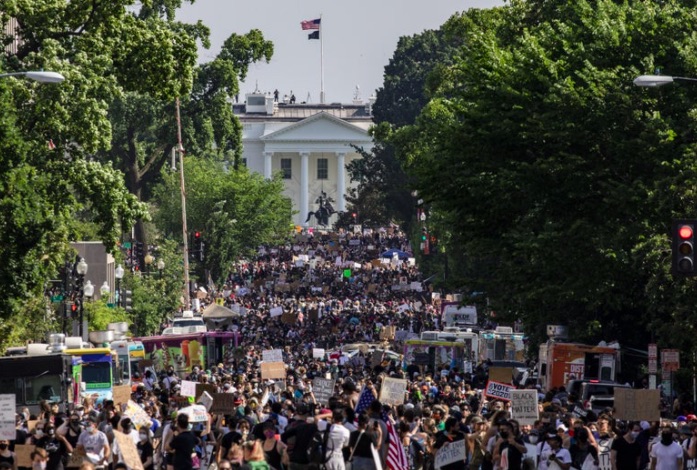 Another website with many photos of the demonstrations throughout the United States
Another website with many photos of the demonstrations throughout the United States

